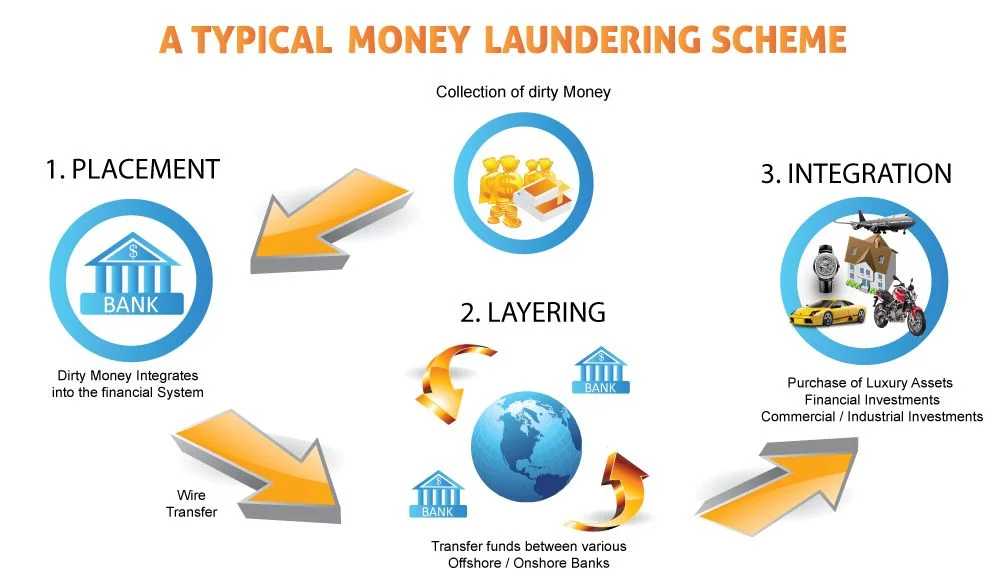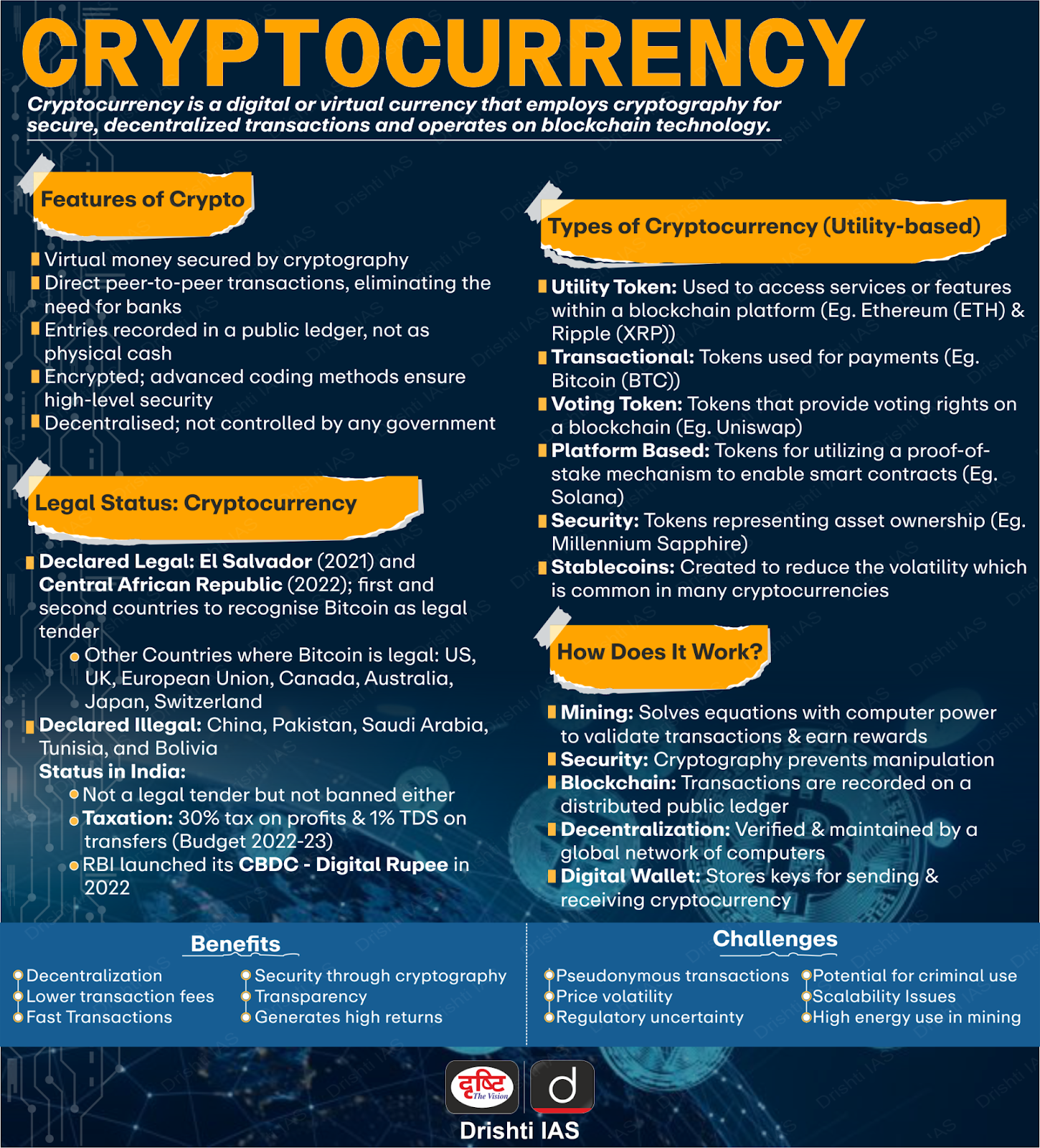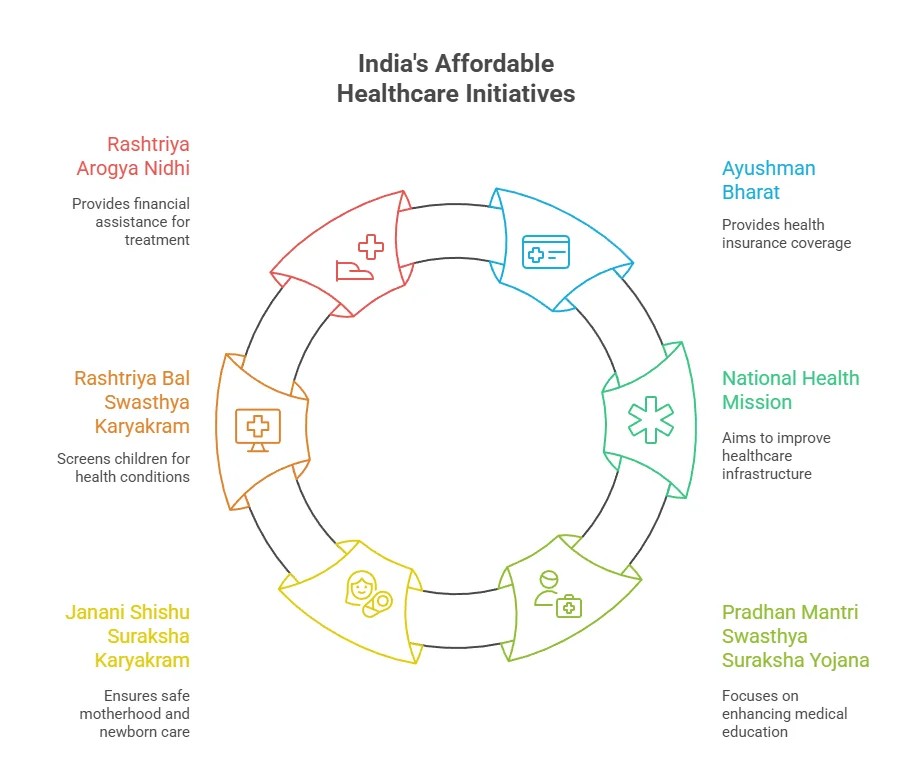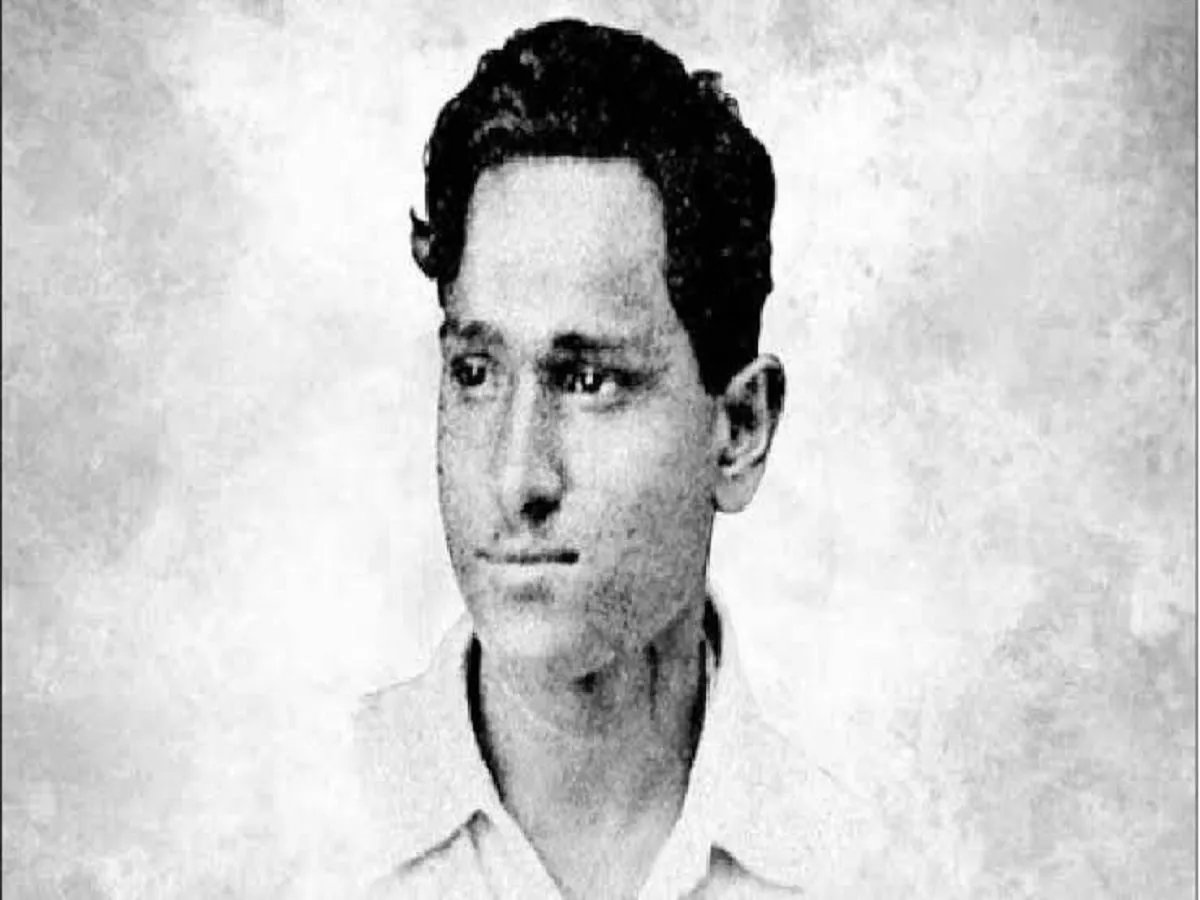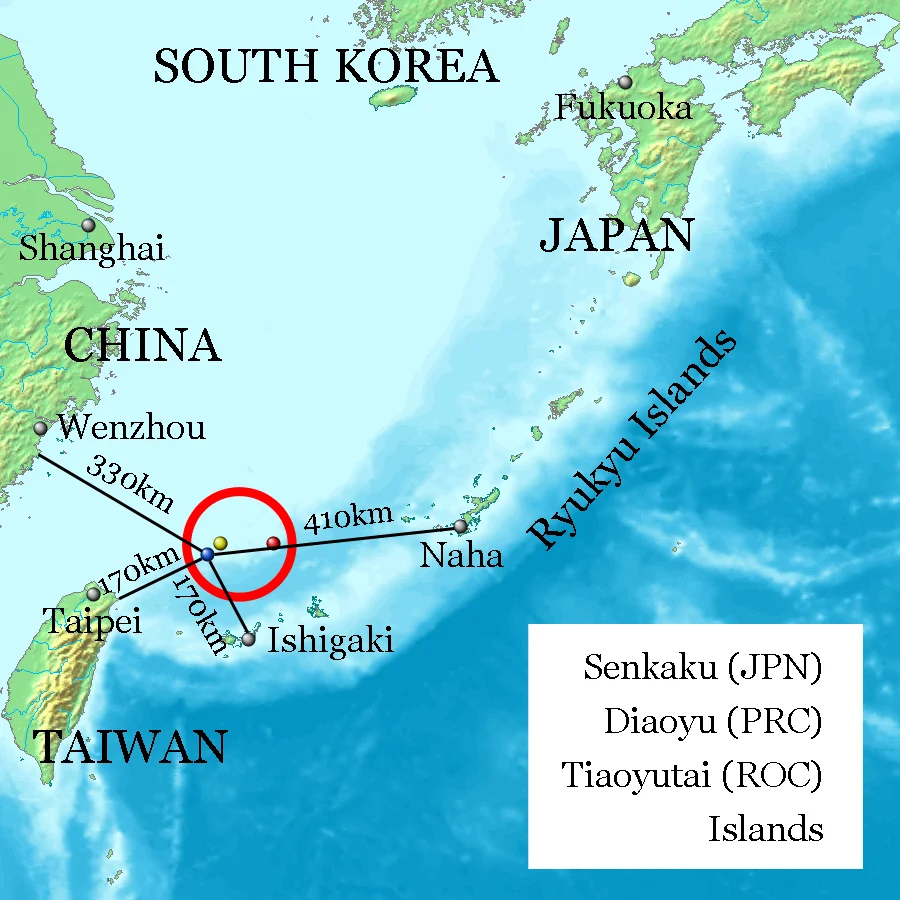Governance
Digital Personal Data Protection (DPDP) Rules, 2025
For Prelims: Telecom Disputes Settlement and Appellate Tribunal, Data Protection Board, Fundamental Right to Privacy, Right to Information (RTI) Act, 2005
For Mains: DPDP Act, 2023 and DPDP Rules, 2025, Balancing privacy and transparency, Rights of Data Principals in India
Why in News?
India notified the Digital Personal Data Protection (DPDP) Rules, 2025. This marks the full operationalisation of the Digital Personal Data Protection (DPDP) Act, 2023.
- Together, the Act and the Rules form a clear and citizen-centred framework for the responsible use of digital personal data.
What are the Digital Personal Data Protection (DPDP) Rules, 2025?
- About: The DPDP Rules, 2025 operationalise the DPDP Act by creating a clear, practical system for personal data protection.
- They strengthen citizen rights, ensure responsible data use by organisations and curb unauthorized use of data.
- The Rules reduce digital harms, support innovation and help build a secure, trusted digital economy for India.
- The DPDP framework puts citizens at the centre of data protection, giving them clear control over how their personal data is used.
Core Provisions
- Phased and Practical Implementation: The Rules allow an 18-month compliance window, giving organisations time to update systems and adopt responsible practices.
- Data Fiduciaries must issue simple, purpose-specific consent notices, and all Consent Managers must be India-based companies.
- Personal Data Breach Notification: Data breaches must be reported to affected individuals without delay, using plain language that explains the incident, potential impact and steps taken, along with clear contact details for assistance.
- Transparency and Accountability: Data Fiduciaries must display clear contact information for data-related queries.
- Significant Data Fiduciaries must undergo independent audits, conduct impact assessments and follow stricter rules, including government directions on restricted or locally stored data.
- Digital-First Data Protection Board: The Rules set up a fully digital Data Protection Board with four members, allowing citizens to file and track complaints online through a portal and app.
- Appeals against the Board’s decisions will be heard by the Appellate Tribunal, TDSAT.
- Strengthening Rights of Data Principals: Individuals can access, correct, update or request deletion of their personal data, and may nominate someone to act on their behalf. All such requests must be resolved within 90 days.
What is the Digital Personal Data Protection (DPDP) Act, 2023?
- About: The DPDP Act, passed in August 2023, sets out India’s framework for protecting digital personal data.
- It explains the duties of organisations handling such data and follows the SARAL (Simple, Accessible, Rational and Actionable) approach so that the rules remain simple, clear and easy to follow.
- The DPDP framework also aligns with the Right to Information (RTI) Act, 2005 by balancing privacy rights with the public’s right to information.
- Core Principles: The law rests on seven core principles. These include consent and transparency, purpose limitation, data minimisation, accuracy, storage limitation, security safeguards and accountability.
- These principles guide every stage of data processing. They also ensure that personal data is used only for lawful and specific purposes.
- Data Protection Board of India: The Act sets up the Data Protection Board as an independent body to oversee compliance, investigate breaches and ensure corrective steps.
- It helps protect individual rights and strengthens trust in India’s digital environment.
- Key Terms Under the DPDP Act, 2023:
- Data Fiduciary: An entity that decides why and how personal data is processed, either alone or with others.
- Data Principal: The individual to whom the personal data relates.
- In the case of a child, this includes a parent or lawful guardian.
- For a person with a disability who cannot act independently, this includes the lawful guardian acting on their behalf.
- Data Processor: Any entity that processes personal data on behalf of a Data Fiduciary.
- Consent Manager: An entity that provides a single, transparent and interoperable platform through which a Data Principal may give, manage, review or withdraw consent.
- Appellate Tribunal: The Telecom Disputes Settlement and Appellate Tribunal (TDSAT), which hears appeals against decisions of the Data Protection Board.
- Penalties Under the DPDP Act, 2023: The Act imposes strict penalties on Data Fiduciaries, including fines up to Rs 250 crore for failing to maintain security safeguards.
- Not reporting data breaches or violating child-related provisions can lead to penalties up to Rs 200 crore, while other violations may attract fines up to Rs 50 crore.
- Significance: DPDP increases privacy rights but still keeps the RTI Act working as before. It ensures both privacy and access to information can work together.
- The amendment to Section 8(1)(j) of the RTI Act through the DPDP Act balances the fundamental right to privacy, as affirmed by the Supreme Court in Justice K.S. Puttaswamy v. Union of India (2017), with the right to information.
- This amendment aligns with established judicial reasoning on reasonable restrictions, codifies existing jurisprudence, and helps avoid potential conflicts between the laws.
- However, Section 8(2) of the RTI Act still permits disclosure of Information when public interest is more important than privacy harm. This keeps the core purpose of RTI intact promoting openness and accountability in public life.
- The amendment removes legal uncertainty and prevents clashes between privacy protection and information access. It maintains the essence of the RTI Act while strengthening privacy under DPDP.
- The amendment to Section 8(1)(j) of the RTI Act through the DPDP Act balances the fundamental right to privacy, as affirmed by the Supreme Court in Justice K.S. Puttaswamy v. Union of India (2017), with the right to information.
What are the Rights and Protections for Citizens under India’s DPDP Framework?
|
Right / Protection |
Description |
|
Right to Give or Refuse Consent |
Citizens can allow or deny use of their personal data. Consent must be clear and can be withdrawn anytime. |
|
Right to Know How Data is Used |
Individuals can ask what data is collected, why it is used and how it is processed, and organisations must provide this information in a simple form. |
|
Right to Access Personal Data |
Citizens may request a copy of their personal data held by a Data Fiduciary. |
|
Right to Correct Personal Data |
Individuals can get inaccurate or incomplete data corrected. |
|
Right to Update Personal Data |
Citizens can update changed details like address or contact number. |
|
Right to Erase Personal Data |
Individuals can request deletion of their personal data in specific situations, and the Data Fiduciary must act on the request within the allowed timeframe. |
|
Right to Nominate Another Person |
Individuals can nominate someone to exercise their data rights on their behalf, helpful in cases of illness or other limitations. |
|
Mandatory 90-Day Response |
Fiduciaries must act on access, correction, update or erasure requests within 90 days. |
|
Protection During Data Breaches |
Citizens must be informed quickly about breaches, their impact and the steps to take. |
|
Clear Contact for Queries |
A Data Fiduciary must provide a designated officer or Data Protection Officer for data-related questions. |
|
Special Protection for Children |
Processing a child’s data requires verifiable parental/guardian consent, except for essential services such as healthcare, education or real-time safety. |
|
Special Protection for Persons with Disabilities |
A lawful guardian must give consent if a person with a disability cannot make decisions, as per relevant laws. |
Conclusion
The DPDP Act, 2023 and Rules, 2025 create a clear, citizen-focused system for handling personal data, strengthening privacy rights and enforcing organisational accountability. The framework supports a secure, transparent and innovation-friendly digital ecosystem, helping India advance its digital economy while protecting user trust.
|
Drishti Mains Question: Discuss how the Digital Personal Data Protection (DPDP) Act, 2023 and the DPDP Rules, 2025 strengthen citizen rights while enabling a secure and innovation-friendly digital economy in India. |
Frequently Asked Questions
Q. What is the purpose of the Digital Personal Data Protection (DPDP) Act, 2023?
It establishes India’s legal framework for protecting digital personal data using the SARAL approach and defines duties for organisations handling such data.
Q. Who are considered Data Fiduciaries and Data Principals under the DPDP Act, 2023?
A Data Fiduciary decides how and why personal data is processed, while a Data Principal is the individual to whom the data relates, including guardians for children and persons with disabilities.
Q. What powers does the Data Protection Board of India have?
The Board investigates breaches, enforces compliance, orders corrective action and enables digital grievance redressal, with appeals heard by TDSAT.
Q. How do DPDP and Right to Information (RTI) Act, 2005 function together?
DPDP amends Section 8(1)(j) of RTI Act, 2005 to protect privacy but retains Section 8(2), allowing disclosure when public interest outweighs privacy harm, ensuring harmony between transparency and privacy.
UPSC Civil Services Examination, Previous Year Question (PYQ)
Prelims
Q. ‘Right to Privacy’ is protected under which Article of the Constitution of India? (2021)
(a) Article 15
(b) Article 19
(c) Article 21
(d) Article 29
Ans: (c)
Q. Right to Privacy is protected as an intrinsic part of Right to Life and Personal Liberty. Which of the following in the Constitution of India correctly and appropriately imply the above statement? (2018)
(a) Article 14 and the provisions under the 42nd Amendment to the Constitution.
(b) Article 17 and the Directive Principles of State Policy in Part IV.
(c) Article 21 and the freedoms guaranteed in Part III.
(d) Article 24 and the provisions under the 44th Amendment to the Constitution.
Ans: (c)
Mains
Q. Examine the scope of Fundamental Rights in the light of the latest judgement of the Supreme Court on Right to Privacy. (2017)
Q. Describe the context and salient features of Digital Personal Data Protection Act 2023. (2024)
Economy
Regulating Cryptocurrency in India
For Prelims: International Consortium of Investigative Journalists (ICIJ), Cryptocurrency, EU, RBI Ombudsman, SEBI, Enforcement Directorate (ED), I4C, CBI.
For Mains: About cryptocurrency and money laundering, Challenges, regulatory gaps, and policy measures for cryptocurrency governance in India, along with its use in cross-border money laundering and cybercrime.
Why in News?
A global investigation, titled The Coin Laundry, conducted by the International Consortium of Investigative Journalists (ICIJ), has uncovered how cryptocurrency exchanges have become a new hotspot for global money laundering.
How are Cryptocurrency Exchanges Being Used as Channels for Money Laundering?
- Placement: Cryptocurrencies are borderless, pseudonymous, and fast, offering limited traceability in the absence of strict KYC norms.
- Crypto "mixers" and "wallet hops" obscure ownership trails, making them ideal for laundering illicit proceeds.
- They may also use mule or pooled accounts to deposit cash and buy crypto like Bitcoin, taking advantage of the system’s pseudo-anonymity.
- Layering: In this stage, criminals hide the origin of funds by using multiple exchanges, privacy coins, KYC-free Decentralised Exchanges (DEXs), and chain-hopping ( moving cryptocurrency across multiple blockchains in quick succession).
- These tactics break the audit trail, making transactions very hard to trace.
- Actors involved include ransomware groups, drug syndicates, cyber fraud rings, and sanction evaders.
- Integration: In the final stage, the “cleaned” funds are converted back into fiat currency and moved into the legitimate economy.
- The criminal sells the obscured crypto on a laxly regulated foreign exchange and withdraws the fiat to a bank account, posing it as legitimate investment returns.
Money Laundering
- About: Money laundering is the illegal process of making dirty money — gained from criminal activity — look clean or legitimate.
- It disguises the true origin of the funds so they can be used without raising suspicion from law enforcement or financial authorities.
- Stages of Money Laundering:
What is Cryptocurrency?
- About: A cryptocurrency is a digital currency secured by cryptography and operates in a decentralized system without government control. Examples include Bitcoin, Ethereum, and Litecoin.
- Working of Cryptocurrency: Cryptocurrency transactions are recorded on a blockchain, a public digital ledger maintained by a global network of computers that verify and add each transaction.
- Users need a digital wallet that stores public and private keys used to send, receive, and verify transactions.
- Legal Status of Cryptocurrency in India: Cryptocurrency in India is unregulated but not banned.
- The government does not recognize it as legal tender and aims to restrict its use for illegal activities or as a payment method.
What are the Regulatory and Institutional Gaps in India’s Crypto Ecosystem?
Regulatory Gaps
- Lack of Clear Policy Framework: The government faces a paradox. Establishing clear crypto regulations may appear as endorsement and attract millions of new, risk-prone investors, while officials remain cautious about integrating a volatile, decentralized asset into the formal financial system due to potential systemic risks.
- Unclear Legal Definition: There is no legal clarity on whether crypto is a commodity, currency, asset, or new digital class, creating confusion over which regulator—RBI, SEBI, or a new body—should oversee it.
- Taxation and Compliance Issues: The 1% TDS on virtual digital assets, has led to an exodus of users, funds and trades to offshore platforms and complicating oversight, while unclear tax rules for staking, mining, and airdrops create confusion for users.
- Technological Oversight Gaps: Crypto evolves faster than policy, with tools like mixers, privacy coins, cross-chain bridges, and Decentralised exchanges (DEXs), making real-time enforcement extremely challenging.
Institutional Gaps
- Jurisdictional Enforcement Issues: Cryptocurrencies operate on a global, borderless network. Enforcing Indian laws on offshore exchanges that are accessible to Indian users is extremely difficult.
- In 21 months (Jan 2024–Sept 2025), Indian authorities flagged 27 crypto exchanges for laundering cybercrime proceeds, with about Rs 623 crore stolen from 2,872 victims routed to transnational syndicates.
- Operational Hurdles: The pseudo-anonymous nature of blockchain makes it hard for agencies like the Enforcement Directorate (ED) and I4C to trace funds, identify beneficiaries, and prove wrongdoing.
What Steps can India Take to Strengthen Cryptocurrency Governance?
- Clear Legal and Regulatory Frameworks: Cryptocurrencies should be legally classified as a distinct asset class (e.g., Crypto Assets or Digital Assets) to clarify laws and designate a lead regulator (e.g., SEBI for exchanges, RBI for stablecoins).
- A comprehensive Crypto Asset Regulation Bill should define regulator powers, illegal activities, and consumer protection measures.
- Robust Oversight of Intermediaries: All exchanges serving Indian users, domestic or offshore, should register with the regulator and follow strict Know Your Customer (KYC), Anti-Money Laundering (AML), and Combating the Financing of Terrorism (CFT) norms.
- They should also use advanced blockchain analytics to monitor transactions, flag suspicious activity, and report it to the Financial Intelligence Unit (FIU).
- Prioritize Consumer Protection: Launch awareness campaigns on crypto risks, mandate strict security protocols for exchanges and wallets—including proof of reserves and insurance, and establish a regulator-backed grievance redressal system for investors.
- Rationalize the Tax Regime: Reducing TDS could shift crypto activity back to Indian exchanges and improve transparency, while allowing investors to offset and carry forward losses would make the 30% tax on gains more equitable.
- Inter-Agency Coordination: Create specialized crypto units in agencies like ED, Income Tax, and CBI with blockchain forensic experts and collaborate with global regulators to track cross-border flows.
Conclusion
The Coin Laundry investigation highlights how cryptocurrency exchanges serve as conduits for money laundering, exploiting regulatory gaps globally and in India. The findings emphasize the urgent need for a comprehensive legal framework, robust KYC/AML oversight, investor protection, inter-agency coordination, and rational taxation to secure the digital asset ecosystem and curb illicit financial flows.
|
Drishti Mains Question What is cryptocurrency? Discuss the key challenges associated with regulating cryptocurrencies in India and suggest a way forward. |
Frequently Asked Questions (FAQs)
1. What is money laundering?
Money laundering is the illegal process of converting “dirty money” from criminal activities into seemingly legitimate funds through placement, layering, and integration stages..
2. What is cryptocurrency?
Cryptocurrency is a digital or virtual form of money that uses cryptography for security, operates on a decentralized network (usually a blockchain), and allows peer-to-peer transactions without the need for a central authority like a bank.
3. How are cryptocurrencies used in money laundering?
Crypto allows anonymous, cross-border transfers, often via wallets, mixers, and exchanges, making it difficult to trace funds and integrate illicit money into the legitimate financial system
UPSC Civil Services Examination, Previous Year Question (PYQ)
Prelims
Q. With reference to “Blockchain Technology”, consider the following statements: (2020)
- It is a public ledger that everyone can inspect, but which no single user controls.
- The structure and design of blockchain is such that all the data in it are about cryptocurrency only.
- Applications that depend on basic features of blockchain can be developed without anybody’s permission.
Which of the statements given above is/are correct?
(a) 1 only
(b) 1 and 2 only
(c) 2 only
(d) 1 and 3 only
Ans: (d)
Q. Consider the following pairs: (2018)
Terms sometimes seen in news Context/Topic
- Belle II experiment — Artificial Intelligence
- Blockchain technology —Digital/ Cryptocurrency
- CRISPR – Cas9 —Particle Physics
Which of the pairs given above is/are correctly matched?
(a) 1 and 3 only
(b) 2 only
(c) 2 and 3 only
(d) 1, 2 and 3
Ans: (b)
Mains
Q. Discuss how emerging technologies and globalisation contribute to money laundering. Elaborate measures to tackle the problem of money laundering both at national and international levels? (2020)
Q. What is Cryptocurrency? How does it affect global society? Has it been affecting Indian society also? (2019)
Important Facts For Prelims
Floating Rate Bonds (FRBs)
Why in News?
RBI’s Floating Rate Bonds (FRBs) are witnessing a sharp rise in demand as investors shift from equities, gold, and traditional deposits toward safer, higher-yielding government-backed debt instruments.
- The demand is due to their higher returns, which are linked to the National Savings Certificate (NSC) rate + 35 basis points.
What are RBI’s Floating Rate Bonds (FRBs)?
- About: First issued in 1995 in India, RBI’s FRBs are government securities with a variable coupon rate instead of a fixed one.
- The rate is reset at pre-announced intervals (typically every 6 months or 1 year) based on a pre-selected benchmark, distinguishing them from traditional fixed-rate bonds.
- Eligibility: The bonds are open to individuals (including joint holders) and Hindu Undivided Families (HUFs).
- Non-Resident Indians (NRIs) are not eligible to invest in these bonds.
- Interest Rate Mechanism: The interest rate on FRBs is tied to a market-based benchmark, typically the average yield of the last three auctions of 182-day Treasury Bills or a base rate plus a fixed spread decided through auction.
- In some cases, such as RBI’s retail FRBs, the coupon is linked to the NSC rate, making the returns adjust automatically with changes in broader interest rates.
- Significance: FRBs protects investors from interest-rate risk—when rates rise, coupon payment also rises.
- It serves as a diversification and hedging tool for portfolios dominated by fixed-rate debt instruments.
National Savings Certificate (NSC) Scheme
- About: NSC Scheme was launched by the Department of Economic Affairs, Ministry of Finance to encourage a culture of long-term savings among individuals.
- Tenure and Interest: The scheme has a 5-year maturity period and offers an attractive interest rate of 7.7%, compounded annually.
- Eligibility: Any resident Indian can invest under the NSC scheme. Guardians are eligible to apply on behalf of minors (minimum age 10 years) or individuals of unsound mind.
- Deposits: Investors can deposit a minimum of Rs 1,000, with subsequent deposits in multiples of Rs 100. There is no maximum limit for deposits, and an individual can open multiple accounts under the scheme.
- Additional Benefits: Investors can secure loans by pledging NSC certificates with banks, and the absence of a maximum deposit limit makes it ideal for substantial, long-term savings.
Frequently Asked Questions (FAQs)
1. What are RBI Floating Rate Bonds?
Launched in 2020, these are government-backed, non-cumulative debt instruments with floating interest, repayable after 7 years, providing secure principal and semi-annual interest payments.
2. Who is eligible to invest in RBI Floating Rate Bonds?
Individuals (including joint holders) and HUFs are eligible; NRIs cannot invest in these bonds.
3. What is the National Savings Certificate (NSC) Scheme?
NSC is a 5-year government savings scheme offering 7.7% interest compounded annually, designed to promote long-term savings among residents.
UPSC Civil Services Examination, Previous Year Question (PYQ)
Q. What is/are the facility/facilities the beneficiaries can get from the services of Business Correspondent (Bank Saathi) in branchless areas? (2014)
- It enables the beneficiaries to draw their subsidies and social security benefits in their villages.
- It enables the beneficiaries in the rural areas to make deposits and withdrawals.
Select the correct answer using the code given below:
(a) 1 only
(b) 2 only
(c) Both 1 and 2
(d) Neither 1 nor 2
Ans: (c)
Q. In India, the interest rate on savings accounts in all the nationalized commercial banks is fixed by (2010)
(a) Union Ministry of Finance
(b) Union Finance Commission
(c) Indian Banks’ Association
(d) None of the above
Ans: (d)
Important Facts For Prelims
10th Anniversary of Amrit Pharmacies
Why in News?
The Union Minister of Health and Family Welfare (MoHFW) inaugurated AMRIT (Affordable Medicines and Reliable Implants for Treatment) Pharmacy’s 10th Anniversary Celebrations at Bharat Mandapam in New Delhi.
What is AMRIT (Affordable Medicines and Reliable Implants for Treatment) Pharmacy?
- About: AMRIT was launched in 2015 by the MoHFW and implemented by HLL Lifecare Limited, a Mini Ratna Public Sector Enterprise under the MoHFW, to reduce out-of-pocket medical costs through a nationwide network of low-cost pharmacy stores.
- These outlets supply essential medicines, implants, and surgical items at affordable prices to improve access for all patients.
- It is similar to Pradhan Mantri Bhartiya Janaushadhi Kendras (PMBJK), as both aim to provide medicines and medical supplies at affordable rates.
- Vision and Mission: AMRIT’s core aim is to deliver affordable and dependable pharmacy services through the public sector, supporting wider access to essential medicines and reducing treatment costs.
- Impact (as of October 2025): AMRIT has supplied medicines worth Rs 17,047 crores and helped patients save Rs 8,395 crore.
- A total of 68.51 million patients have benefited from the discounted services.
What are Jan Aushadhi Kendras?
- About: Jan Aushadhi Kendras are government-supported pharmacy outlets under Pradhan Mantri Bhartiya Janaushadhi Pariyojana (PMBJP) that provide quality generic medicines at much lower prices than branded drugs.
- They operate under the Department of Pharmaceuticals with the goal of reducing healthcare costs and improving access to essential medicines.
- PMBJP: It is a flagship scheme that ensures affordable, quality medicines for all, especially the poor and vulnerable.
- It was initially launched in 2008 by the Department of Pharmaceuticals, Ministry of Chemicals & Fertilizers and significantly restructured in 2015-16.
- PMBJP reduces out-of-pocket health spending by offering high-quality generic medicines through over 16,000 Jan Aushadhi Kendras across the country.
- These outlets provide more than 2,100 drugs and 300 surgical items made in World Health Organization's (WHO) Good Manufacturing Practices certified facilities and tested in National Accreditation Board for Testing and Calibration Laboratories (NABL)-accredited labs.
- Jan Aushadhi SUGAM App: It helps users find nearby Kendras, search medicines, and compare generic vs branded prices with instant savings information.
Frequently Asked Questions (FAQs)
1. What is AMRIT Pharmacy?
AMRIT (Affordable Medicines and Reliable Implants for Treatment) is a MoHFW-backed retail network implemented by HLL Lifecare (a Mini-Ratna PSU) to provide essential medicines, implants and surgical disposables at heavily discounted rates to reduce OOP expenditure.
2. How does Pradhan Mantri Bhartiya Janaushadhi Pariyojana (PMBJP) ensure medicine quality?
PMBJP sources drugs from WHO-GMP certified manufacturers and tests each batch in NABL-accredited laboratories, ensuring generics match branded drugs in safety and efficacy.
3. How do PMBJP promote entrepreneurship?
Jan Aushadhi Kendras are run by doctors, pharmacists, NGOs and SHGs with government support (up to Rs 2.5 lakh and other incentives), creating local jobs and decentralised retail opportunities.
Rapid Fire
Birth Anniversary of Batukeshwar Dutt
Batukeshwar Dutt, a brave revolutionary who fought alongside Bhagat Singh in India’s freedom struggle, was remembered on his birth anniversary on 18th November.
Batukeshwar Dutt
- Early Life: Batukeshwar Dutt was a freedom fighter and was born on 18th November 1910 in Khandaghosh village, Burdwan district, West Bengal.
- During college, he met Bhagat Singh, who inspired him to join the Hindustan Socialist Republican Association (HSRA), and he also became an active member of the Naujawan Bharat Sabha.
- Contribution in Freedom Struggle: On 8th April 1929, Dutt and Bhagat Singh threw two homemade bombs into the empty space of the Central Legislative Assembly to protest repressive colonial bills, not to harm anyone.
- They raised slogans like Inquilab Zindabad, distributed leaflets stating if the deaf are to hear, the sound has to be very loud, and surrendered willingly to draw nationwide attention.
- Dutt was arrested and given a life sentence. He actively fought for prisoners’ rights and joined several hunger strikes, including a 114-day strike with Bhagat Singh, demanding improved conditions for political prisoners.
- After his release in 1938, Dutt joined the Quit India Movement (1942).
- Legacy: He is remembered as a selfless revolutionary, embodying Swami Vivekananda’s ideal of working without seeking any return.
- He was cremated at Hussainiwala where Bhagat Singh, Rajguru, and Sukhdev were laid to rest.
| Read More: Shaheed Diwas |
Place In News
Senkaku Islands
China Coast Guard ships conducted a “rights enforcement patrol” near the Japan-administered Senkaku Islands. The move comes after the Japanese Prime Minister stated that any Chinese attack on Taiwan could prompt a military response from Tokyo.
- The Senkaku Islands remain a long-running territorial dispute between China and Japan.
- Senkaku Islands: The islands are referred to as the “Senkaku”, the “Diaoyu”, and the “Diaoyutai” by Japan, China and Taiwan, respectively, with Japan administering them.
- They lie in the East China Sea, close to all three countries, and consist of five small uninhabited islands and a few rocks, with the largest, Uotsuri, measuring only 1.4 square miles.
- Strategic Importance: A 1969 UN report indicating possible hydrocarbon reserves under the Senkaku Islands boosted their strategic value and intensified sovereignty disputes.
- Historical Background of the Dispute: Japan assumed control of Taiwan and the Senkaku Islands in 1895, after winning the first Sino-Japanese War. China argues Japan illegally seized the islands after the war.
- After Japan's loss in the Second World War in 1945, the US took administrative control of Islands under the 1951 Treaty of Peace.
- In 1971, the US and Japan signed the Okinawa Reversion Agreement, and returned Okinawa and the Senkaku Islands to Japan.
- China and Taiwan immediately protested the handover, but Japan insists their claims emerged only after the discovery of potential hydrocarbons.
| Read more: Senkaku Island Dispute |
Rapid Fire
Quantum Clock
A 2025 study in Physical Review Letters has uncovered that in a quantum clock, the energy required to read the time is far greater than the energy required to make the clock tick, offering new perspectives in quantum physics, thermodynamics, and precision metrology.
Quantum Clock
- About: A quantum clock measures time using the behaviour of quantum particles, whose states change in tiny and probabilistic ways.
- Unlike classical clocks that always tick forward, quantum clocks show randomness, generate very little entropy (heat or disorder created when energy is used), and can even tick backward — raising the challenge of how they create a reliable and irreversible sense of time.
- Working: A quantum clock operates using a Double Quantum Dot (DQD) system, consisting of two tiny electron-holding “islands” in a semiconductor.
- A single electron moves through them in the sequence 0 → L → R → 0, and this full cycle counts as one clock tick.
- The electron’s movement is controlled by voltages, and when forward and backward jumps become equal (equilibrium), no entropy is produced, and the device stops functioning as a clock.
- Measurement: To read the time, a nearby quantum dot acts as a charge sensor, and its current changes depending on whether the electron is in state 0, L, or R.
- Measuring the electron’s state uses energy, which creates a small amount of heat or disorder (entropy).
- Significance: Could lead to more energy-efficient atomic clocks by focusing on reducing entropy in observation systems (e.g., optical clocks, ytterbium lattice clocks).
- It can also help improve ultra-precise clocks, guide efficient quantum computing designs.
| Read More: Quantum Technology |
Rapid Fire
India Joins Global Research on Dolphin–Fisher Mutualism
The University of Kerala, in collaboration with international researchers, has launched a multi-year research project (2024–2028) to study the rare cooperative fishing behaviour (mutualism) between Indo-Pacific humpback dolphins and artisanal fishers in Ashtamudi Lake, Kerala.
- Mechanism: Indo-Pacific humpback dolphins (Sousa plumbea) signal dense fish shoals with tail-slaps or rolls, helping fishers cast nets at the right moment for maximum yield, while the scattered fish become easier for dolphins to catch.
- Mutualism: It is a long-term association between two species where both benefit—such as through food, protection, pollination, seed dispersal, or shelter.
- Indo-Pacific Humpback Dolphins: They are known for their distinct hump and elongated dorsal fin, inhabit shallow coastal waters across Australia, Africa, and Asia.
- The group comprises four species, with S. teuszii—and S. chinensis—listed under Appendix I and II of the Convention on the Conservation of Migratory Species of Wild Animals (CMS).
- It is listed as Endangered by IUCN.
Ashtamudi Lake
- About: It is a Ramsar site in Kollam district, one of Kerala's largest lakes and regarded as the gateway to the backwaters.
- The name 'Ashtamudi' means 'eight braids' in Malayalam, derived from its unique eight-armed or branched shape.
- Geography: It is fed by several rivers including the Kallada River, drains into the Arabian Sea, and is surrounded by mangroves, coconut palms, and lush greenery..
- Biodiversity: Bird species like kingfishers, herons, egrets, and cormorants inhabit the wetlands. Kallada River serves as a breeding ground for pearl spot fish (karimeen).
| Read More: Addressing Pollution in Ashtamudi Lake |


